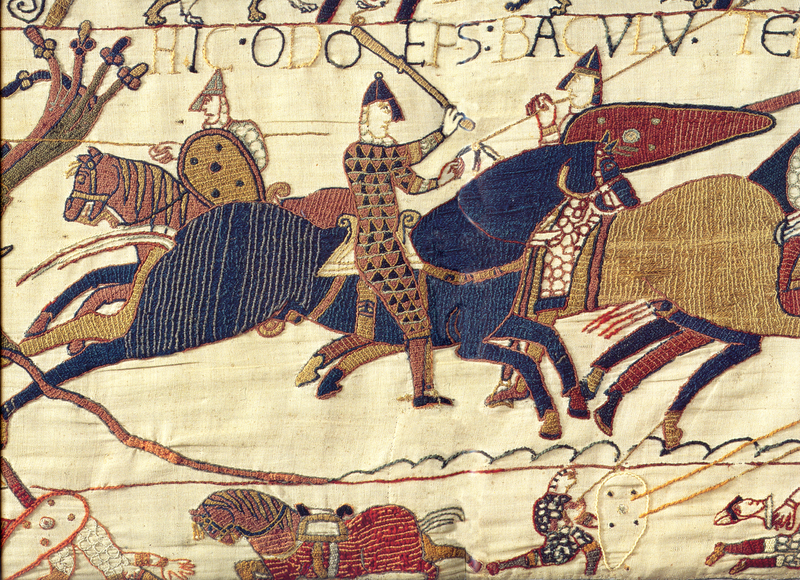 The Norman Conquest
The Norman Conquest
The Norman Conquest, resulting from Battle of Hastings in 1066, gave the English language its strongest change in direction.
On England’s defeat at this legendary battle, William of Normandy (William the Conqueror) brought the Norman language to the Royal Courts of England.
The Norman Conquest changed the English language due to this interesting and dominating new influence, both directly on language and on the wider culture.
A Two-Tiered Society
For the next 300 years, this mixture of French rule over English subjects saw the dawn of a two-tiered society.
The Royal courts and aristocrats spoke an Anglo-Norman language (heavily influenced by French), and the everyday people spoke Old English (Anglo-Saxon).
For example, animals were called by their English names, sheep and cow, but for eating at the banquet table the Norman aristocracy introduced the words ‘mouton’ (mutton) and boeuf (beef).
The Norman Conquest changed the English language even across the lower-classes, as new language usage filtered down through society.
This produced an interesting mix of languages with French and English co-exiting as uneasy partners across the country.
In addition to the new words for various meats, we can still see French words of law and the military existing today with ‘bail’ and ‘sergeant’.
English Meets French
From the 11th to the 14th century, French was the language of the Court, royal charters and legal documents. French was also used in schools and universities.
Although the Normans ruled England, they were still few in number compared with the English population.
It is thought that there grew a burgeoning market for translators during the time of the Norman Conquest for those French speakers looking to trade with the English people.
Many new words developed at this time combining English with French.
For example, the French word ‘gentle’ combined with the English ‘man’ and ‘woman’ to create ‘gentleman’ and ‘gentlewoman’. The word ‘gentle’ also took on English endings to create the adverbs ‘gently’ and ‘ungentlemanly’.
The End of Old English
With English fast disappearing as a formal written language, it was left to evolve without any restraints.
In spoken English, from the start of the Norman invasion, people’s grammar became more fluid and lost nearly all the inflections of the original Old English language.
At the same time, the English vocabulary absorbed influences from the ruling French, alongside the Norse and Scandinavian influences from the earlier centuries. This saw over 30,000 new words joining the English vocabulary.
In addition to this, intermarriage became common between the immigrant Normans and the native English population. This meant that people were commonly speaking both languages, causing the two languages to mingle even more closely.
By 1100, the English language had changed so much that it could no longer be classed as Old English. It was a whole new language: Middle English.
Next: Middle English
Attributions
- A detail from the Bayeux Tapestry showing Odo, half brother to William the Great, cheering his troops forward. The Bayeux Tapestry is a 70-metre long embroidered cloth depicting the Battle of Hastings and the events leading up to the Norman Conquest of England. It was probably commissioned by Bishop Odo of Bayeux in the 11th century. [Public Domain Mark 1.0] via Wikimedia Commons


I am trying to find a book on this specific subject – the influence of French (and Latin) on the English language post-1066.
Any suggestions?
Thanks